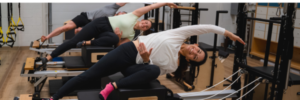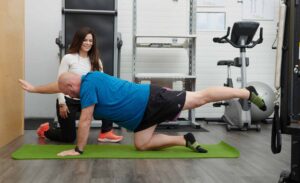Most people think compression socks are just for older people, but compression socks help keep your veins healthy, and many vein problems start when people are young.
The concept of compression therapy is the external application of a controlled pressure to an extremity to help increase the efficiency of the venous and lymphatic systems. This is done with an elastic garment that has a specific amount of compression that is strongest around the ankle and gradually decreases up the extremity/garment. Depending on the pathology, compression therapy can be applied in different forms such as socks, stockings, pantyhose, or sleeves.
INDICATIONS & RISK FACTORS
Compression therapy can be utilized to help with the treatment and prevention of many venous and lymphatic issues and assist in performance and recovery during activity. As a treatment measure, it can be prescribed to treat such things as phlebitis, thrombosis, aftercare from surgery, sclerotherapy, aiding achy and heavy feeling legs, varicose veins, spider veins, edema, and leg ulcers.
Compression therapy has also been utilized in activity as a performance and recovery measure by assisting continuous blood flow, minimizing blood pooling, increasing drainage of toxins like lactic acid, and helping to sustain reparative processes.
As a preventative measure, compression can be prescribed for such things as long distance flying, pregnancy, occupation, and lifestyle. Below are some important risk factors for the development of venous and lymphatic issues:
- Age: Risk Increases With Age Due To Wear And Tear On The Valves Of Veins
- Sex: Women Are More Likely To Develop Venous Issues Due To Hormonal Changes Relaxing Vein Walls
- Family History: Venous And Lymphatic Issues Are Hereditary
- Obesity: Being Overweight Puts More Pressure On The Veins
- Occupation: Sitting And Standing For Long Periods Of Time Effects Blood Flow And Increases Blood Pooling Overtime
That being said, it is also important to know that compression therapy is not suitable for everyone. Compression should not be worn if someone has advanced arterial disease of the legs, septic phlebitis, advanced peripheral neuropathy, or uncontrolled congestive heart failure.
EFFECTS & BENEFITS OF COMPRESSION THERAPY
Graduated compression has many positive effects on the body to both blood flow and the tissues themselves. Below are some of the physiological effects of compression:
Blood Flow Effects:
- Increases Venous Blood Flow (Circulation)
- Decreases Venous Blood Volume (Blood Pooling)
- Decreases Reflux In Diseased Superficial And Deep Veins (Minimize And Reduce Spider And Varicose Veins)
- Decreases Pathologically Elevated Venous Pressure
Effects on Tissue:
- Decreases Elevated Edema Of The Tissue (Swelling)
- Increases Drainage Of Toxic Substances Like Lactic Acid
- Decreases Inflammation
- Sustains Reparative Processes
- Improves Movement Of Tendons And Joints
HEALTHY LEG TIPS
To maintain healthy legs, it is important to implement more than just compression therapy. Here is a useful list of how you can play your part in keeping your legs healthy:
- Avoid Sitting And Standing For Long Periods Of Time. Circulation Improves With Physical Activity, So Take A Short Walk, Climb Stairs, And Make An Effort To Move Around At Home And Work.
- After A Long, Tiring Day, Revitalize Your Legs With A Cool Shower Or Bath. This Is Especially Important In The Summertime As Heat Will Cause Your Veins To Dilate And Can Induce Swelling.
- Elevate Your Legs. Help The Effects Of Gravity And Boost Your Body’s Natural Circulation.
- Work Out. Regular Exercise Helps Keep Muscles Strong And Active To Help Blood Flow.
- Manage Your Weight. Excess Weight Puts Added Pressure Onto The Veins.
- Wear Compression Socks Every Day To Help Improve Venous Circulation And Prevent And Treat Venous Problems.
FINAL REMARKS
It is very important to see a certified compression therapy fitter to get a pair of compression socks. Ill-fitting garments can cause harm to an individual such as pressure ulcers, arterial occlusions, and even gangrene. Compression stockings are a medical prescription that you wear on your legs and therefore should be recommended by a health care professional. There are many different materials, sizes, types, and colours of garments that need to be taken into consideration to be the most effective and beneficial to an individual. If you would like to have all the benefits of compression therapy, please talk to a health care professional and have them fitted by a certified compression therapy fitter.
Click here to browse our selection of over-the-counter compression socks!




